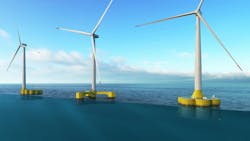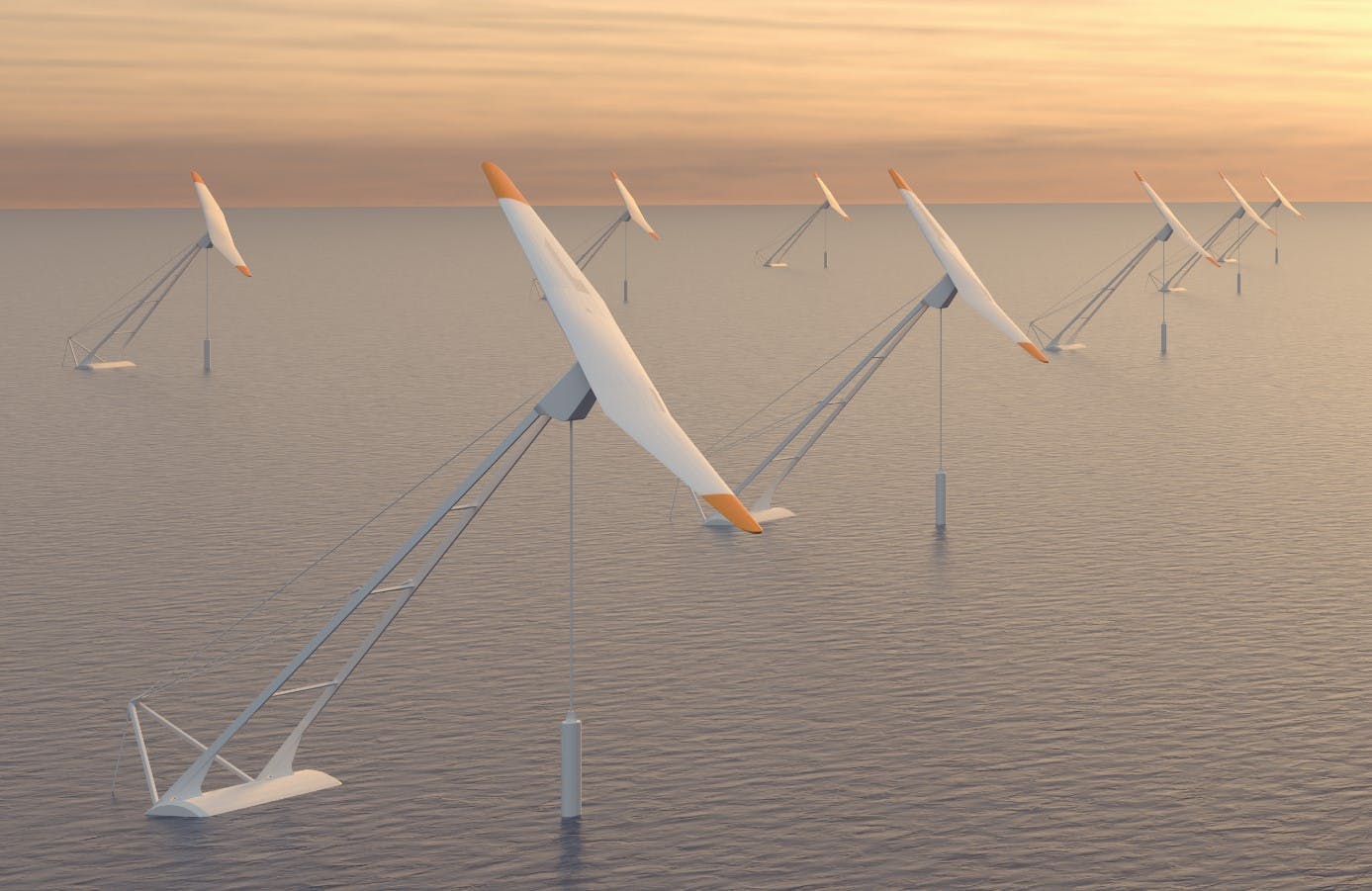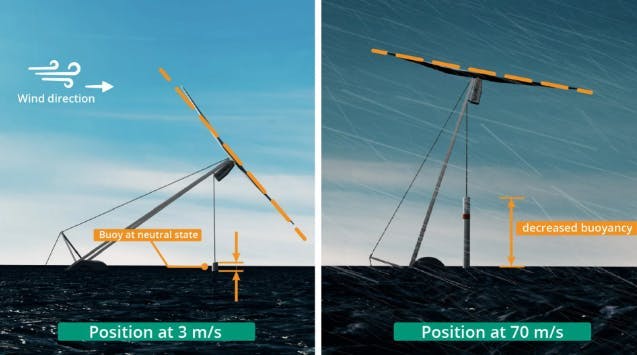New offshore wind technologies increasing efficiencies
Aker Solutions' new floating wind designs simplify construction, reduce maintenance
Aker Solutions has released three new floating offshore wind foundation designs. All feature passive ballast systems and are designed to support turbines of 15 MW or more.
YFloat is a steel floating substructure with a symmetrical design, said to support efficient pre-fabrication with the option of local assembly. The design is also said to provide potential for scalability to support higher power generation and reduced levelized cost of energy (LCOE).
CONFloat-Omega, a circular concrete floater, has a moonpool at its center and an offset turbine and tower, both designed for harsh environment service. The concrete material and robust construction ensures high resistance to fatigue and minimal maintenance needs, Aker Solutions said.
Finally, CONFloat-7C is an adaptation of the company’s CONDEEP designs for Norwegian North Sea platforms, with a seven-cell configuration featuring a centralized turbine and tower. The design reduces the need for integration and completion draught, the company added, allowing for a wider range of construction locations and ports.
Trelleborg's new sealing system designed to reduce costs
At the WindEurope Exhibition in Copenhagen, Denmark, Trelleborg Marine and Infrastructure has released its new sealing system, IRIS for Airtight Platforms (ATP), designed to help cut costs associated with offshore wind foundations.
The new seal is said to remove the need for the welded steel landing rings traditionally used in monopiles and transition pieces. Benefits, according to the company, include reductions in costs associated with primary steel, welding and engineering, lessened maintenance during service, and a design that facilitates ease of installation.
We4Ce, TouchWind and Kleizen collaborate on sturdier turbine blades
The blades can withstand higher wind speeds than established wind turbine blades, the company claims.
We4Ce collaborated with moulding provider specialist Kleizen to produce the moulds and blades. TouchWind, backed by Japanese shareholder Mitsui O.S.K. Lines, appointed We4Ce as lead partner for the blades.
TouchWind’s tilting rotor wind turbine features a 6-m diameter rotor. The 12-kW turbines will be tested both onshore and offshore, located close together to validate the high-energy density previously demonstrated in wind tunnel tests.
The initial prototype turbine, under assembly in Eindhoven, the Netherlands, will undergo testing in the summer. The rotor tilts upward, nearly parallel to the water surface at high wind speeds.
Instead of pushing against the wind like traditional turbines, the TW6 lifts itself with the wind, similar to a kite, using aerodynamic lift to remain stable and to regulate the power. According to the company, the design allows the blade to harness strong winds more efficiently with reduced stress on the structure.
Conventional three-blade turbines are said to shut down at wind speeds above 90 km/h to prevent load damage. Touchwind’s design, with its self-adjusting single rotor, is claimed to remain operational in wind speeds up to 250 km/h.
We4Ce’s production method employs one-shot infusion technology for the central part of the rotor blade. The aerodynamic shells are designed to eliminate the need for bonding lines in the nose area, reducing the risk of leading edge erosion with improved durability.
TouchWind has embarked on development of a 3-5 MW version of the turbine in 2025, aiming to scale the design for future offshore deployment in more compact offshore wind farms.
Want more offshore wind content?
Renewable Energy newsletter
This monthly e-newsletter provides updates on new technology, projects and policy for the development of offshore renewable energy from wind, waves, solar, and other resources.
About the Author
Jeremy Beckman
Editor, Europe
Jeremy Beckman has been Editor Europe, Offshore since 1992. Prior to joining Offshore he was a freelance journalist for eight years, working for a variety of electronics, computing and scientific journals in the UK. He regularly writes news columns on trends and events both in the NW Europe offshore region and globally. He also writes features on developments and technology in exploration and production.




